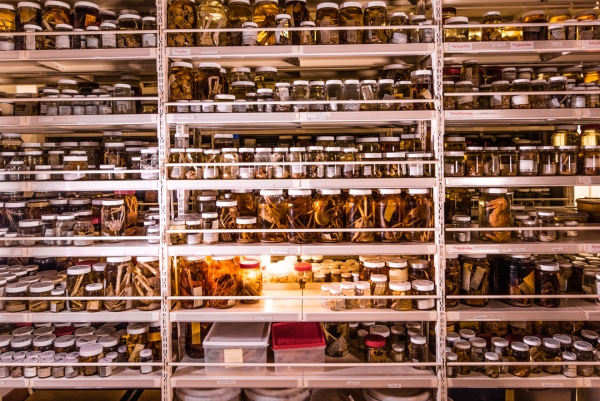What do a squat lobster, a sand hopper, a comma shrimp and a geodiid sponge have in common?
Uroptychus sadie, Syrrhoe sadiae, Campylaspis millsae and Geodia sadiemillsae are all named after Sadie Mills, who as a little girl played in rockpools on Scotland’s Isle of Mull and dreamed of becoming a marine biologist.
Fast forward a couple of decades, and she’s sharing her love of tiny ocean creatures with researchers from around the world in her role as manager of the NIWA Invertebrate Collection. The nationally significant collection is a veritable treasure trove of more than 300,000 specimens from New Zealand, Antarctic and southwest Pacific waters.
Having one species named after you is considered a great honour. Having four, is a clear testament to Sadie and the quality of her work.
She was in her teens when her family emigrated to Dunedin from the north of England in 1997 and she didn’t want to come.
“I was most worried about the music. I was really into all the indie bands in Manchester, and the only music that I’d heard from New Zealand was OMC’s “How Bizarre” and Kiri Te Kanawa,” she laughs.
Sadie discovered the Dunedin sound and New Zealand reggae bands, and, still set on becoming a marine biologist, she took subjects through school and university that she hoped would send her down that path.
“I didn’t know what job I would end up with. Even at Masters level I still wasn’t sure, but I knew that NIWA was one of the places that was big in marine science.
“I saw an ad for a curatorial technician, and I thought that sounded really cool. While I was at Otago Uni, I worked at the Portobello Marine Lab on macrofauna, the little animals that live in the mud. I was really struck by what I was looking at down the microscope. For example, polychaete worms with massive jaws and amphipods – the little sand hoppers."
“That fascinated me, so I thought working in the collection would be cool because you’d get to see lots of crazy creatures from all over the place.”
Sadie joined NIWA in 2006, and in 2014 was appointed Collections Manager, leading a team of three and responsible for more than 300,000 specimens. She has also been able to take her fascination with creatures in rockpools and mudflats out to the deep sea.
She has sailed on 17 voyages and spent 472 days at sea, mainly on NIWA’s research vessel Tangaroa. This work has taken her all around New Zealand’s waters and south to Antarctica. Her roles onboard include preserving and identifying marine invertebrates, live logging of fauna and seabed habitats, chemical safety and preparing biosecurity importation documents for samples.
“Going to sea is really great because you get to see all of these deepsea animals. We lower a video camera to the seafloor, and you can see the amazing habitats the animals live in, ranging from seamounts – the undersea volcanoes – to sponge gardens, coral reefs and algal meadows.”
Her specialty is the taxonomy of New Zealand and Antarctic species of delicate starfish-like creatures called Ophiuroidea – brittle stars, snake stars and basket stars.
Asked what she’s proudest of, Sadie doesn’t hesitate. “The sheer number of collaborators we have in New Zealand and around the world.
“Our team is known to be friendly and really helpful. That’s important when we have people from overseas and around NZ coming to study our collection.
“The gains New Zealand makes are very high because we don’t have a lot of taxonomists here, and we have to rely on those international collaborators to get the biodiversity in our species described. And they give a lot back to us. The number of scientific publications we have every year is really high, because of our collaboration.”
In the last year alone, the NIC team hosted 21 visitors from nine different institutions. As well as hosting researchers, they also processed 148 loans and donations of NIC specimens to 43 researchers in 13 countries.
The team’s knowledge of biodiversity information informs NIWA research, client projects, government policies and international initiatives. They’re also in demand as ambassadors for NIWA, sharing their knowledge and specimens at public displays such as Te Taiao at Te Papa or last year’s Dive Deep with NIWA exhibition at Otago Museum.
“What gives me the greatest pleasure is seeing people’s reactions when they see something they’ve never seen before or learn something new.”
This story forms part of Water and Atmosphere - February 2021, read more stories from this series.

